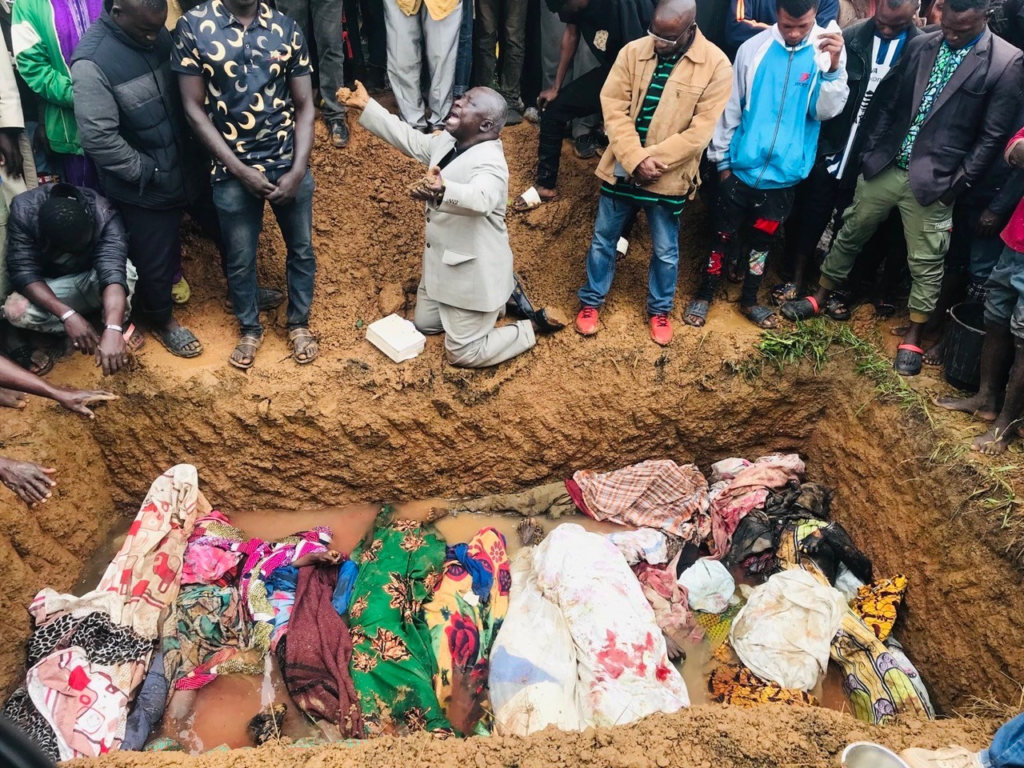By Segun Onibiyo
(Marte) – “We were outgunned, plain and simple,” said Bada, a junior officer who survived the siege by fleeing into the bush with a handful of other men. “Command didn’t send backup until it was too late. We were sacrificed.”
The stench of gunpowder still clings to the air where Nigerian soldiers once stood guard, according to eyewitnesses speaking to TruthNigeria. Burnt-out armored vehicles litter the roadside, their twisted metal carcasses a silent testament to a battle already lost. In the town square of Marte, now eerily quiet, the black flag of the Islamic State West Africa Province (ISWAP) flutters above a scorched government building a grim symbol of the group’s latest and most strategic conquest.

In a ruthless assault that unfolded over two days in early April, ISWAP insurgents overwhelmed Nigerian military positions in Marte Local Government Area of northeastern Borno State, a county near the western shores of Lake Chad. According to multiple military insiders and eyewitnesses, the attackers came in waves heavily armed, tactically disciplined, and frighteningly precise.
By the time the dust settled, dozens of Nigerian soldiers were dead or missing, a battalion outpost was reduced to rubble, and one of Nigeria’s key defensive positions against jihadist expansion in the Lake Chad Basin had fallen without reinforcement.
Between April 2 and 3, fighters from the Islamic State West Africa Province (ISWAP) launched one of their most coordinated and technologically advanced offensives in recent memory, according to multiple military sources and eyewitnesses who spoke to TruthNigeria. The assault on Marte, a strategic town in Borno State’s northeastern corridor, was part of a broader offensive that extended into May 12–13, targeting Dikwa, Rann, and stretches of the Damboa–Maiduguri highway.
The April attack saw insurgents using drone surveillance, encrypted communications, and armored vehicles to outmaneuver Nigerian troops, destroy outposts, and block key supply routes, highlighting a sharp evolution in ISWAP’s battlefield sophistication.
ISWAP attacks
- ISWAP first attacked Marte on April 2, as reported by Daily Trust and Vanguard Nigeria. That assault led to the fall of the town and major casualties.
- A subsequent wave of coordinated attacks occurred between May 12 and 13, which included Dikwa, Rann, and ambushes on military convoys along the Damboa–Maiduguri Road. Marte may have been part of that wider theater, but the primary seizure of the town occurred in early April.
Armed with drone surveillance and using rapid strike tactics, the militants hit military outposts, overran key towns, and blocked critical roadways rekindling fears about the weakness of Nigeria’s counterinsurgency strategy and the shifting nature of jihadist warfare in the Lake Chad region.
The offensive struck multiple locations almost simultaneously – Marte, Dikwa, Rann in Kala-Balge Counties, and the Damboa–Maiduguri highway – underscoring a new level of strategic planning, battlefield mobility, and boldness in ISWAP’s operations.
Strategic Domino
Marte’s fall is more than a military setback. It’s a seismic shift in the balance of power in northeastern Nigeria. Positioned near the Lake Chad waterways and bordering the vast Sambisa Forest, Marte serves as a critical junction for trade, military logistics, and insurgent smuggling routes.
Control of the town gives ISWAP a direct route to stage attacks deeper into Nigerian territory, including Maiduguri, the capital of Borno State.
“This isn’t just about territory. It’s about narrative,” said Dr. Folahan Adebayo, a conflict analyst at the Center for Strategic Security Studies in Abuja told TruthNigeria reporter on phone. “ISWAP wants to show the Nigerian state as weak and unable to protect its own people. Sadly, this operation did just that.”
According to Adebayo, ISWAP’s evolving tactics mirror those used by ISIS affiliates in Syria and Iraq: infiltrate, overwhelm, and occupy all while filming their victories for propaganda.
Unlike Boko Haram’s chaotic and brutal style, ISWAP fighters operate with military precision, often deploying drones, improvised armored vehicles, and encrypted communications.
Abandoned and Alone
For the civilians of Marte, the insurgents’ arrival marked the start of another nightmare in a cycle of violence. Nearly 10,000 residents have since fled, trekking for days through thorny bush paths to seek safety in displacement camps near Monguno and Maiduguri.
“We heard gunfire all night, then shouting in Arabic,” said Aisha Bukar, 38, to TruthNigeria reporter in Hausa. She fled with her five children. “When we woke up, the soldiers were gone. 7 were reported killed, several others captured, armed tanks destroyed, ammunition charted away. We had no choice but to run.”
Bukar now lives in a crowded IDP camp outside Maiduguri, where food is scarce, and sanitation conditions are worsening with the influx of displaced families.
Cracks in Command
TruthNigeria obtained exclusive interviews via telephone with three active-duty military insiders who allege that the defense establishment had warning of ISWAP’s movements toward Marte but failed to act decisively.
“There was satellite intel. We saw them mobilizing on the outskirts,” said one intelligence officer who requested anonymity for safety reasons. “But our requests for aerial support were delayed, and commanders downplayed the risk. It was a leadership failure.”
An official spokesperson for Nigeria’s military declined to comment directly on the allegations but issued a general statement insisting that “troop morale remains high, and operations are ongoing to reclaim Marte and surrounding areas.”
ISWAP’s Expanding Arsenal
ISWAP, a breakaway faction from Boko Haram since 2016, has rapidly evolved into the dominant jihadist force in the Lake Chad region. According to the Armed Conflict Location & Event Data Project (ACLED), ISWAP was responsible for more than 1,200 deaths in 2024 alone—the highest toll since its formation.
Recent intelligence from security analysts suggests that ISWAP’s access to advanced weaponry is growing. Arms shipments reportedly flow in through Lake Chad from Libya and Sudan, often smuggled in fishing boats and hidden beneath humanitarian aid cargo.
“They have night-vision gear, satellite phones, even drones now,” according to Fati Adamu, a researcher at the West Africa Counterterrorism Observatory. “ISWAP is no longer a ragtag militia. They are a well-funded, well-armed insurgent army,” Adamu told TruthNigeria.
Survival and Resistance
Despite the chaos, some residents have chosen to remain behind in Marte and surrounding villages, forming vigilante groups and community watch patrols – Community Guards. In the farming village of Kirenowa, 20 kilometers from Marte, locals gather nightly to guard against insurgents.
One of the leaders of the Community Guards, Malam Ibrahim, said, “We can’t keep running.” He is a local farmer and father of seven. “If we leave, they will take everything: our land, our lives. We must resist. We must stay and fight.”
Their tools are rudimentary machetes, hunting rifles, old walkie-talkies, but their will is strong. Local imams, women’s cooperatives, and youth leaders are coordinating grassroots communication networks to warn each other of approaching threats.
The Human Cost
In the end, it’s not just towns that fall, it is human lives. Children grow up with gunfire as lullabies. Mothers bury sons with no graves to mark their passing. Soldiers vanish into the bush, their families left in limbo.
As the sun sets over Marte, now eerily silent under ISWAP’s grip, one can’t help but wonder: how many more towns must fall before Nigeria regains control or admits it has lost it?
For now, the people of Marte wait, displaced and disillusioned, while the black flags above their homes flutter in triumph.
Segun Onibiyo reports on terrorism and conflicts for TruthNigeria



